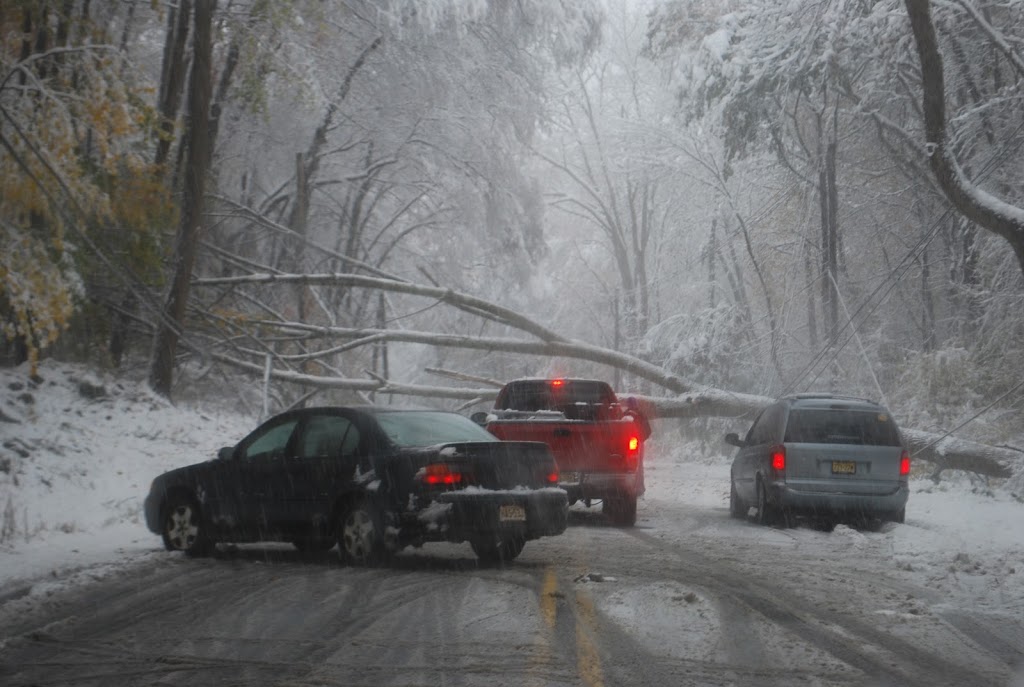This past Saturday, my wife and I were driving to a wedding in Hope, NJ, which is about 75 minutes from our home. As you may have heard, New Jersey, as much of the Northeast, received a rare and rather nasty snowstorm. We didn’t know what we were in for.
After sitting in traffic on Route 206 for about 30 minutes, we learned that a tree had fallen up ahead, and was blocking the entire roadway; okay, so mystery solved. Our GPS detoured us to another route, which took us on to Schooleys Mountain Road; a road we were somewhat familiar with because it was how we got to the college our younger son, Douglas, went to as an undergrad (Centenary). We were about 15 minutes from our destination and a short distance from where we were to turn, when we encountered a freshly fallen tree, blocking our way (see first photo). So, we had to turn around and find another way (what did we do before the GPS?).
This time we were driving along Route 46, four tenths of a mile from where we were to turn, and again, less than 15 minutes from our destination. Now we were stopped for about 20 minutes and then learned that someone had driven into a utility pole, knocking it down, resulting in a roadblock which wouldn’t clear for hours. And so, off again!
We were heading down a road when we found yet another tree blocking the road; not a terribly large one, and one I thought we could maneuver around. But before we had a chance to try, a truck came the other way (second photo). To make a long story short, the truck helped to make our path clearer, but also nearly hit us, as he fishtailed his way up the hill and inches away from our car. We eventually made it to the wedding, missing the ceremony: a trip that took us nearly four and a half hours.
Recognizing that the snow covered roadways required extra care, I, as well as just about every driver we encountered, drove much slower than normal. But there were still accidents and other mishaps. But, we could control much of the risks we encountered.
Contrast this with the 84 year old man from Pennsylvania, who was napping in his recliner at home. A tree fell down, onto his home, and killed him. A totally unanticipated event. We could think of the man’s house as a AAA-rated structure, which wasn’t able to withstand the onslaught of a tree, whose limbs were made more heavy by snow falling upon leaves, which normally are long gone before the first snow arrives.
Can we see a parallel between these two situations: driving through a snowstorm, and resting at home during a snowstorm? In the first, we can observe risks and take steps to reduce or try to avoid them. In the second, “out of left field” an event appears, one that we couldn’t have expected; perhaps not unlike the mortgage crisis which rippled onto the stock market.
Bottom line: we can only do so much to avoid or control risks. We should try to identify the risks we face, and take the necessary steps to minimize them. However, we must also be aware that there are certain risks we cannot anticipate, and must respond to them, as best we can, if we are able to.



